No matter your age or perceived ability, there are certain exercises that have incredible benefits for every body. These functional strength exercises mimic movements in our daily lives and help strengthen our core, made up of our abdominal wall, back and hips. Developing a strong core assists with proper postural alignment, decreases pressure on your back and knees and makes everyday activities easier.
To ensure safe execution, we have provided variations of each exercise with corresponding progressions once you have mastered a movement. Start with 8 repetitions of each exercise, working your way up to 12-15 reps (unless otherwise stated).
SQUAT
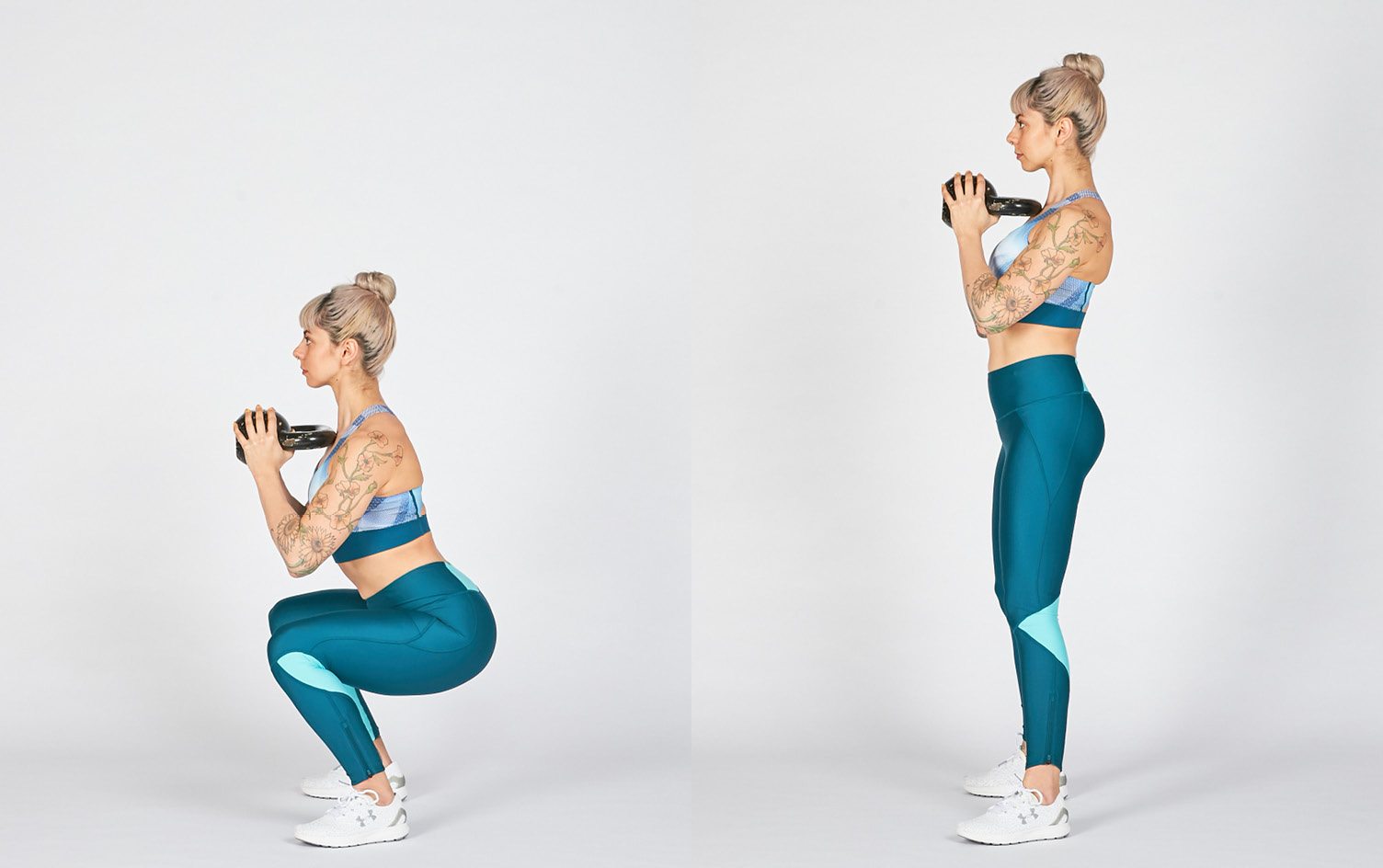
Muscles worked: quadriceps, hamstrings, gluteals, erector spinae
Why: The squat is a compound movement that uses multiple muscle groups to improve balance and stability. The exercise helps create strong, flexible hips to sit and stand without discomfort or assistance and targets the gluteal and quadricep muscles to help relieve pressure from your back and knees as you walk up or down stairs.
Key points: Keep your weight in your heels as you push your hips back, keeping your knees tracking over your toes and your chest lifted. Push your heels into the floor to stand tall and complete one rep. Begin with unweighted squats, adding weight as you progress.
Progression Sequence: Wall, Air, Weights
LUNGE
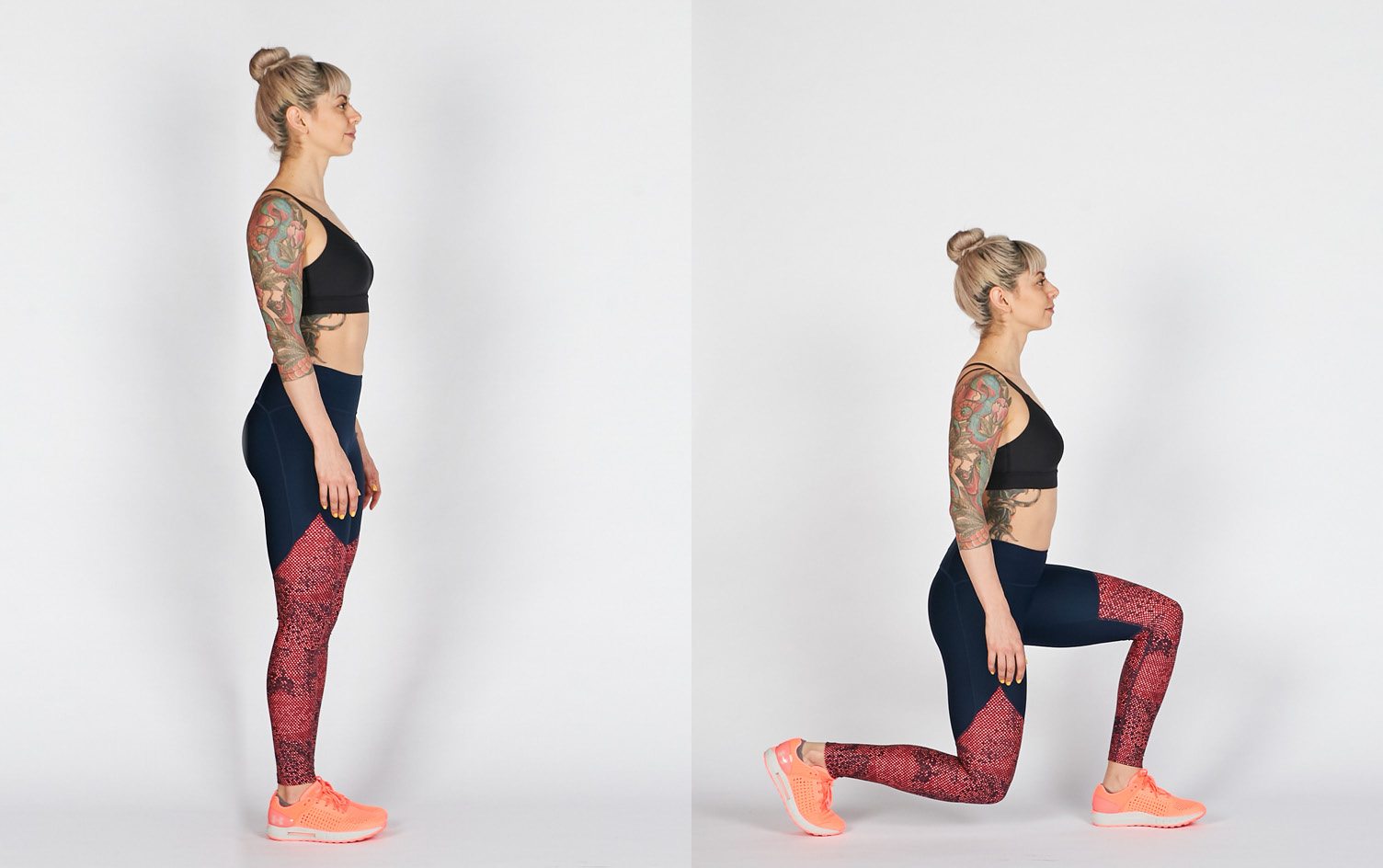
Muscles worked: quadriceps, hamstrings, gluteals
Why: Like squats, lunges are compound movements and increase functional strength, balance and stability.
Key points: To perform a static lunge, keep your spine neutral as you extend your left leg directly behind you. Place the toes of your left leg on the floor as you slowly soften your knees, lowering your body toward the floor. Only go as low as you feel comfortable while keeping your pelvis and spine neutral and shoulders stacked on top of your hips. Drive upward through your legs to straighten them and complete one rep. Perform all reps with your left leg behind you, and then repeat the exercise with your right leg extended behind you. Begin with unweighted lunges, adding weight as you progress.
Progression Sequence: Static, Reverse, Alternate
PUSHUP
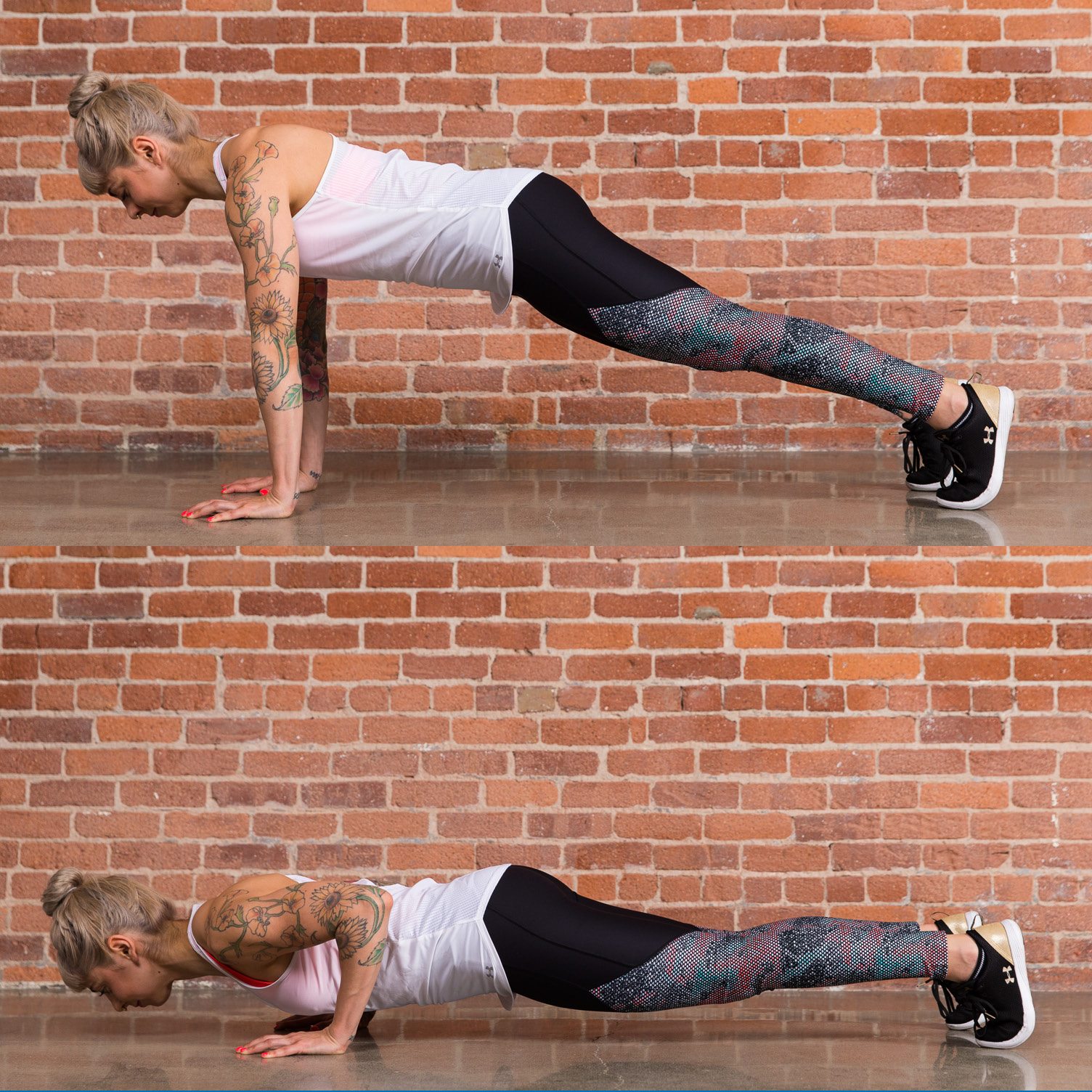
Muscles worked: pectoralis major, deltoids, triceps, transversus abdominals, erector spinae
Why: Pushups develop postural support and upper-body strength to aid in your daily life as you push and reach for things.
Key points: Start with your knees or toes at hip-width (or a little wider than hip-width for more stability). Place your hands on the floor a little wider than your shoulders. Slowly bend your elbows and lower your body toward the floor while maintaining a neutral spine. Push back up to complete one rep, keeping your body in a straight line throughout the entire movement.
Progression Sequence: Elevated, Knees, Toes
ROW
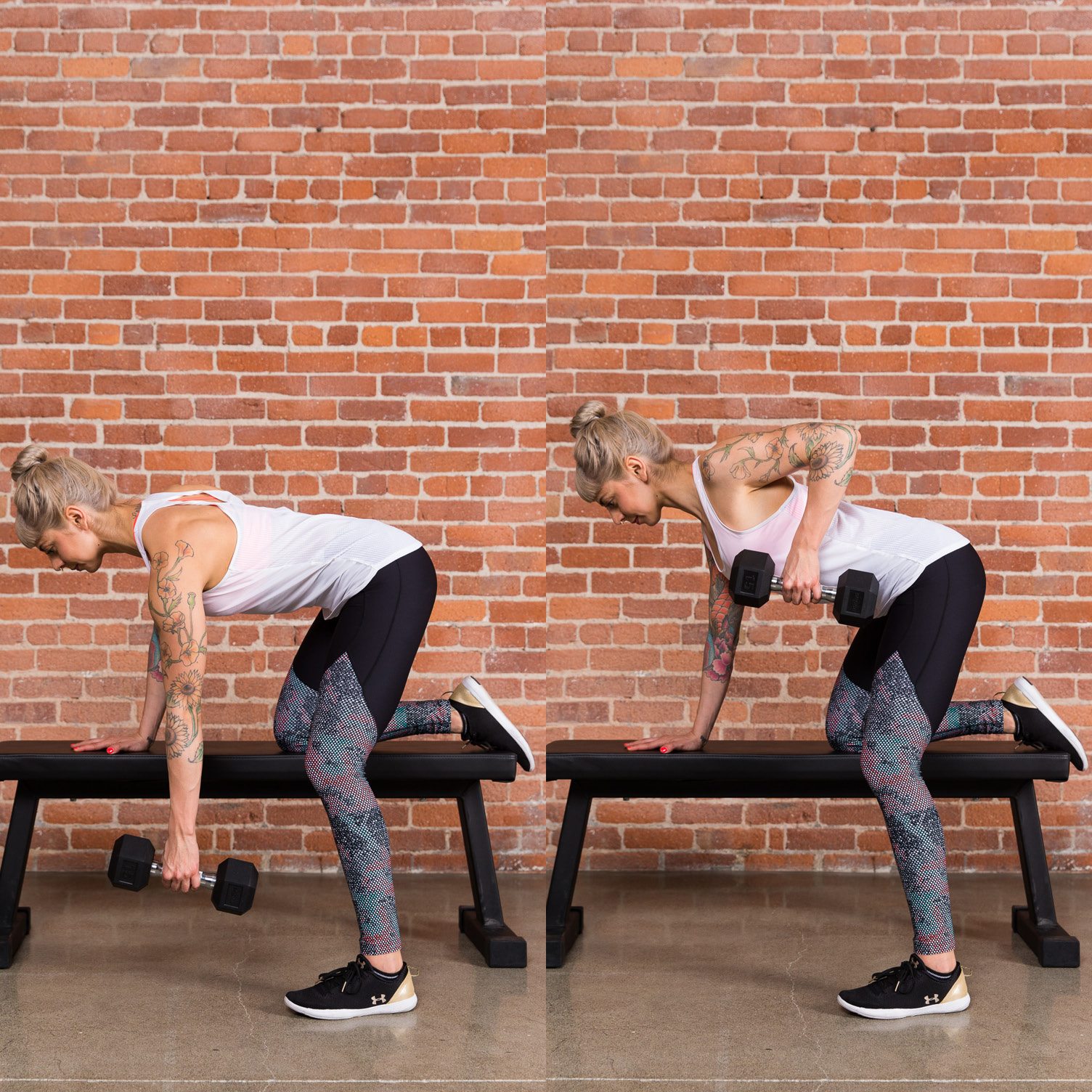
Muscles worked: erector spinae, latissimus dorsi, biceps, deltoids
Why: Rows develop postural support and improve upper-body strength in your back and shoulders to help you perform pulling and carrying movements.
Key points: Beginners should start with the superman exercise: Lay down on the floor in a prone position. Squeeze your glutes to extend and lift your legs off the floor. Slowly lift your shoulders off the floor in a back extension, keeping your head and neck relaxed. Hold this pose momentarily and then lower to complete one rep. Only extend the arms overhead if you want to increase the difficulty.
When you’ve mastered the superman, progress to the row: Start in a table top position with your hands gripping two dumbbells on the ground below your shoulders and knees below your hips. Keeping your arms neutral, pull a dumbbell up keeping your arm close to your torso, flexing your elbow and extending your shoulder. Lower dumbbell to the floor and repeat with the opposite arm. Progress from your knees to your toes to increase the difficulty and work on core stability.
Progression Sequence: Superman, Knee Row, Plank Row
PLANK

Muscles worked: rectus abdominals, tranversus abdominals, erector spinae, quads, deltoids, obliques
Why: Planks develop postural support and strengthen your abdominal, shoulder and core muscles. Planks also increase stability and balance.
Key points: Beginners should start on your forearms and knees: Start on your forearms, with bent elbows placed below your shoulders and your knees behind your hips. Maintain a neutral spine and neck while you hold the plank position as long as you can. Shoot for at least 10 seconds.
Progression to hands and toes: Come up onto your hands and toes to increase the difficulty. Place your feet hip-width apart, or step them a little wider for more stability. Maintain a neutral pelvis, spine and neck.
Progression to forearms and toes: Come down to your forearms, with bent elbows placed below your shoulders. Maintain a neutral pelvis, spine and neck.
Progression Sequence: Knees, Hands, Forearms
SINGLE-LEG BALANCE/DEADLIFT
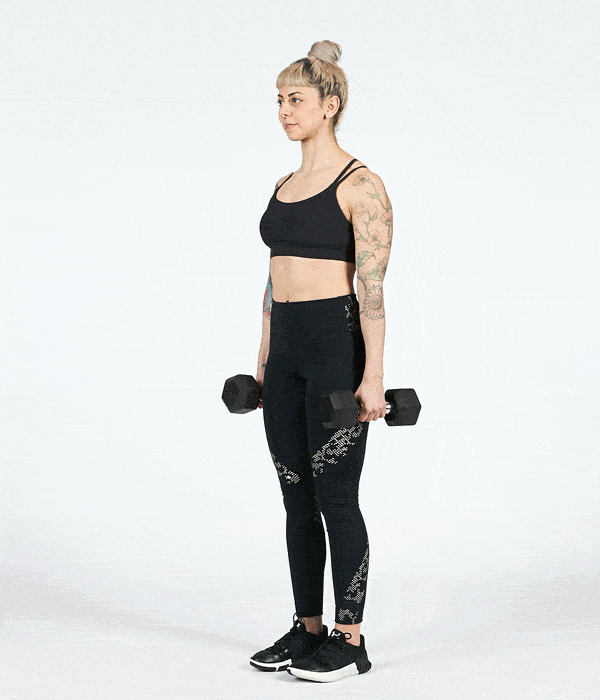
Muscles worked: quadriceps, abductors, adductors, gluteals, hamstrings, transversus abdominals
Why: Single-leg exercises increase postural support, balance and stability.
Key points: Start standing tall with a neutral spine and pelvis with your shoulders relaxed and chest open. Pull your right knee up and lift your foot off the floor and balance on your left foot. Keep your standing knee soft and hold for 10 seconds. Switch legs and hold for 10 seconds.
Progression to single-leg deadlift: Start with the single leg balance above, then slowly start to extend your right leg behind you and allow your upper body to slowly shift forward. Only go as low as your hamstring will allow without curving or flexing through your spine, using your arms for balance. Slowly return to a standing position. Keep your legs hip-width apart, hips square and spine neutral. Perform 5 repetitions per leg.
Progression Sequence: Single-leg balance, single-leg deadlift



